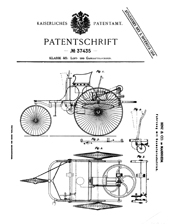The Case for Standard Measures of Patent Quality
The current balkanized approach to measuring patent quality is not serving the users of the world’s patent systems.
Topics

An essential role of any government in supporting its nation’s scientific and commercial innovation is to define and enforce property rights.
In the late 18th century, scientific inquiry was leading to major discoveries that fueled industrialization and increased international trade. At the time, nations relied on different systems of measurement developed in earlier eras of limited international exchange and communication of ideas. Lack of standardization posed an impediment to both scientific advancement and industrial growth. To address the problem, both the French and British governments considered reforming their systems of weights and measures and establishing a decimal-based measurement. In the newly formed United States, Thomas Jefferson, then Secretary of State and the country’s first patent commissioner, proposed such a system as well. Although the United States and Great Britain didn’t remain on this path, the French went ahead and adopted the modern metric system, which today is widely used in science, education and industry throughout most of the world.
Now fast forward to the Information Age. Today, intellectual capital and intangible assets — including technology, brands and strategic competencies — comprise more than 50 percent of the business outputs in the U.S. economy. Smart government policy worldwide encourages investment and growth in innovation, while balancing people’s needs for better and more affordable access. Although patent offices around the world implement their own country’s policy goals regarding intellectual property, they are also promoting innovation, globalization, trade and better lives for people everywhere.
Like those advocating for the metric standard two centuries ago, we have an incompatibility problem today in the international patent system. How the global patent system is organized and managed has far-reaching implications for innovation, consumer choice and corporate profits. Demand for patent examination is rising: In 2008, the most recent year for which good data are available, the World Intellectual Property Organization estimated the number of patents in force around the world at 6.7 million, with an increasing share of inventions being patented in more than one country. Unfortunately, there is no common “quality” standard. Like a patent Tower of Babel, the lack of a common language stands in the way of coordinating and building a useful common asset.
